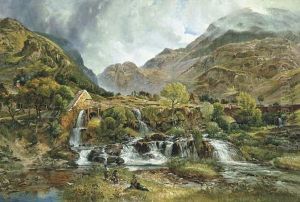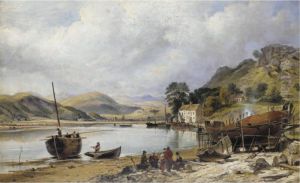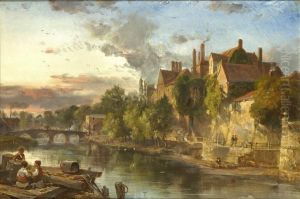Charles Tattershall Dodd Paintings
Charles Tattershall Dodd, also known as C. T. Dodd, was an English landscape painter who lived during the 19th century. He was born in 1801, at a time when the art world was undergoing significant changes with the rise of Romanticism. Dodd was primarily known for his serene and picturesque landscapes, which often captured the beauty of the English countryside.
Dodd's career as an artist began in the early decades of the 19th century. During this era, landscape painting was becoming increasingly popular, partly due to the work of artists like J.M.W. Turner and John Constable, who were contemporaries of Dodd. While Dodd may not have achieved the same level of fame as these artists, his work was nonetheless appreciated for its attention to detail and its tranquil depictions of nature.
Throughout his career, Dodd exhibited his work at various venues, including the British Institution and the Royal Academy. His paintings often featured rural scenes, coastal views, and occasionally included architectural elements. These works were characterized by their refined brushwork and the subtle interplay of light and shadow. Despite his skill and the quality of his work, Dodd did not gain the same level of recognition as some of his peers, and as a result, he remained a modest figure in the history of British art.
Charles Tattershall Dodd continued to paint throughout his life, contributing to the visual documentation of the English landscape during a period of rapid change and industrialization. He died in 1870, leaving behind a body of work that, while not widely known today, is appreciated by art historians and collectors for its contribution to the landscape genre. Dodd's paintings are a testament to the aesthetic values of his time and provide insight into the rural and pastoral scenes that were cherished by the Victorian society.






